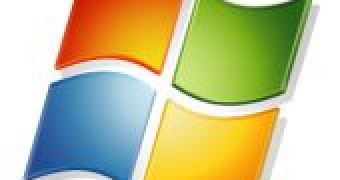With Windows 8, Microsoft is dreaming big, tasking the OS with changing everything, a revolution to overshadow Windows 95’s role in making PCs ubiquitous. The company’s dreams for Windows 7 were incontestably more modest seeing how the software giant needed mainly to recover from a failed “Wow.” Windows 8 vs. Windows 7 measuring contests are bound to highlight the distinct destinies of the two products, and Steven Sinofsky, president of Windows and Windows Live Division, revealed that the engineering process core strategies for the two platforms are inherently different.
“Whereas Windows 7 was about returning to roots, Windows 8 is about maintaining those roots while moving forward in a big and new way,” he said.
The Windows boss is talking about sharing aspects of the Windows 8 development process with the public through the Building Windows 8 blog.
The same engineering challenges that come with taking Windows into a new direction compared to its predecessor are also impacting the way that Microsoft talks about Windows 8.
“This is especially the case for Windows 8 for two reasons. First, we’re talking about a product used by a billion people. No matter how you slice it, that is going to create a very, very large number of perspectives and customers to serve. Of course there is very high value in serving a broad set of customers with one very open product,” Sinofsky said.
“(…) Our job, which we view with deep responsibility, is delivering a product that spans customer scenarios and builds on the value of having a single product (for developers, IT administrators, PC manufacturers, hardware vendors, etc.).”
It should not come as a surprise that Microsoft continues to be committed to catering to the extremely diversified customers segments that have been running Windows for years and years.
The key challenge in this regard is tending to the needs of all users, especially those that have nothing in common.
At the same time, Windows 8’s under-the-hood evolution is paired with enhancements on the surface, and yet again, the company needs to make sure that the operating system’s next-gen UI will offer all customers the best UX possible.
Unfortunately, it’s virtually impossible for Microsoft to share the Windows 8 UI experience with users using nothing but images, video and text.
“Second, we’re changing the user experience model of Windows 8. As anyone who has done user interface work (and more importantly as anyone who has used an interface) knows, having an opinion on user interface is not difficult. Even mocking up static images of how things could look is not that hard,” Sinofsky added.
“My inbox is filled with mock-ups and proposals of dialog boxes and toolbars. But it already was—we’ve been doing this process for a long time. The difficulty in talking about UI through static images is much like trying to summarize or review a movie based on only viewing a still. Our own testing uses dozens of images in sequence when we evaluate designs.”
Revolutionary vs. evolutionary, this is in the end what comparing Windows 8 to Windows 7 will come to.

 14 DAY TRIAL //
14 DAY TRIAL //